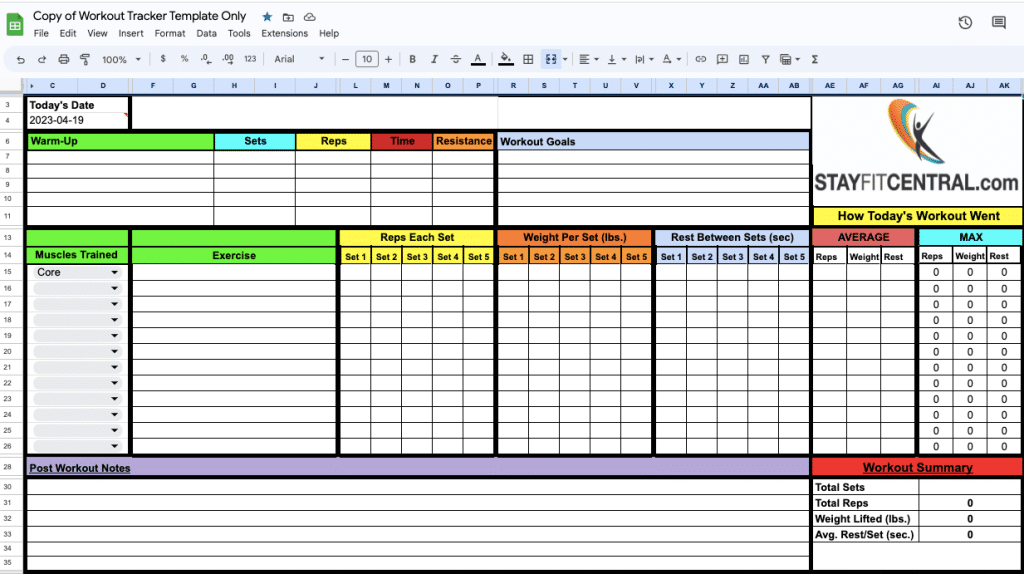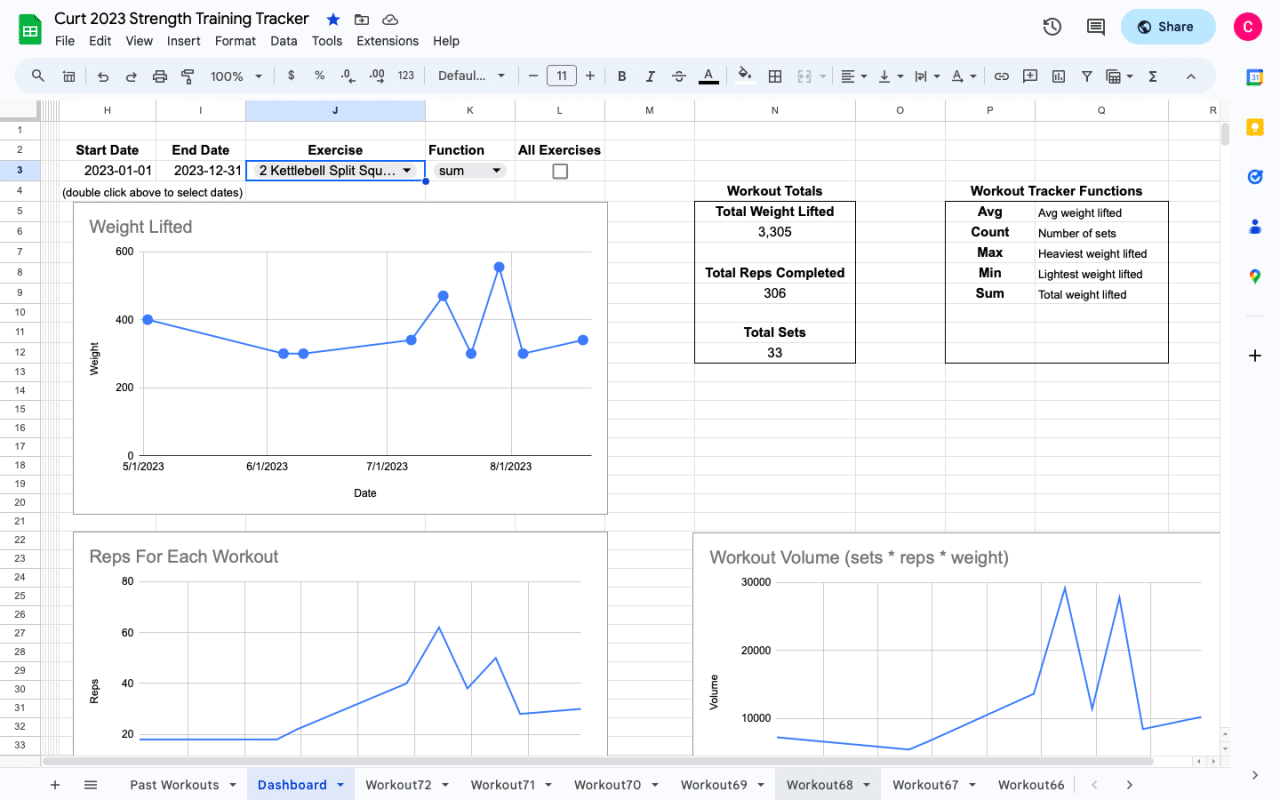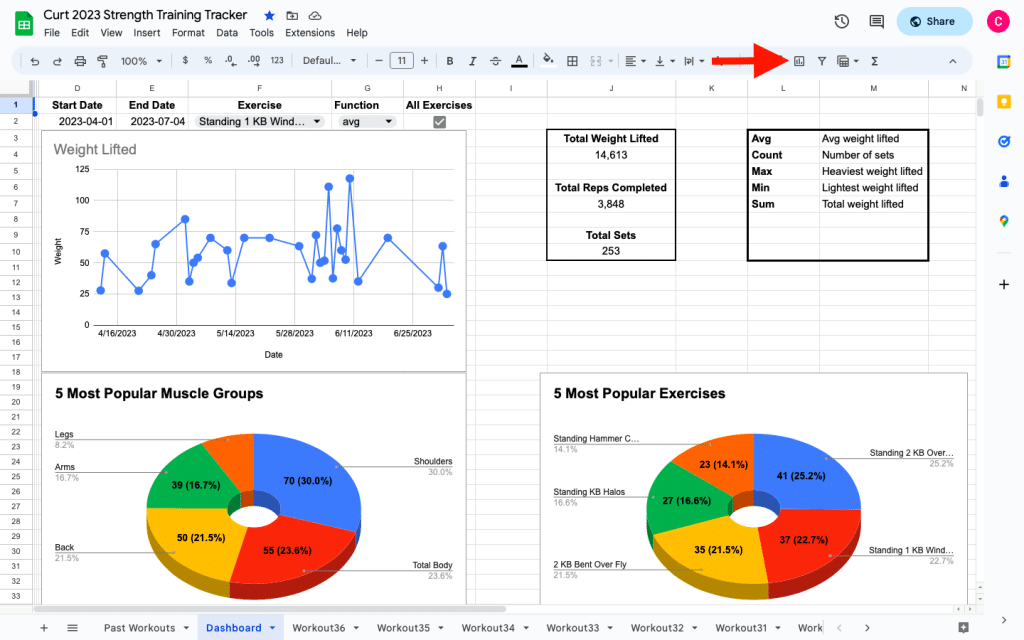Workout Tracker
The Best Way To Track Your Full Body Workouts
Hey, how’s it going? Before you read any further I want to thank you for clicking through to this article and welcome you to the world of full body workout tracking, where we log every rep, set, and weight we lift.
After you’ve read this article you’ll see how it’s not just about recording what you do during a workout; it’s about understanding your workout patterns, learning what needs to be changed and improved, and making sure your full body workouts really are giving every muscle group equal attention every time you train.
How My Full Body Workout Tracking Journey Will Help You
I’ve used everything from scribbling in notebooks to dozens of apps to track my workouts. No matter what method I used, my results were always better when I kept track of what I did in the gym.
Unfortunately, I spent a lot of time learning what does and doesn’t need to be tracked. It took me even longer to learn what to do with the information I keep track of to better plan my workouts.
I don’t want you to have to go through all of this trial and error.
So I wrote this article. It only takes a few minutes to read and gives you everything you need to know when it comes to how to track your full body workouts as well as using the info you gather for better results in the gym.
It shows you how to use whatever you use to log your workouts whether it’s an app, spreadsheet, or index cards and turn it into the world’s best weight training tracker.

The Best Way to Track Your Full Body Workouts
What you track your workouts with matters. I use a Google Sheets-based tracker I designed myself. It syncs seamlessly with your Google account, providing a user-friendly interface and comprehensive data at your fingertips. While what I’ll teach you can be applied to any tracker, the principles align perfectly with the one I’ve created. You can get a copy of my template for future use – it’s a game-changer.
Step 1 – Use Your Tracker To Choose The Best Exercises
You should use your tracker to make sure every workout you do is actually training every major muscle group. To do add your workout’s exercises to your tracker. Then log which muscle groups each of them trains.
A quick review of what you’ve entered shows you if you’re doing at least 1 exercise for every major muscle group. This includes your: chest, back, shoulders, legs, core (abs/lower back), and arms.
You can learn more about choosing exercises for your workout here.
Step 2 – Add What You’ll Track During The Workout
They’re dozens of things you can track when you lift weights. Below are the 5 most important things to track with every exercise you do.
- The muscles groups used for each exercise
- How many sets of each exercise you want to do
- The number of reps to perform every set
- How long you’ll rest between sets
- The amount of weight you plan to lift every set of the workout
You can also track data about the entire workout to review and use when planning new workouts.
Some things worth tracking are:
- How long your workout lasted
- Total reps per exercise and workout
- Average and max lifts for every exercise
- The average time you rested between sets
- Workout volume (sets*reps*weight lifted) for each exercise and the entire workout
Step 3 – Record Your Results
This information you initially add to your tracker gives you a plan and goals to achieve. What you actually do often ends up being different. Sometimes you do better than you hoped, sometimes you don’t.
Make sure you always update your original workout to show what you actually did. You can do this during or right after your workout, whichever works best. Changing your workout log to show that you did 10 push ups instead of the 8 you planned on or that you squatted 185 lbs instead of the 180 you originally planned on doing.
Step 4 – Use Your Tracker to Review Your Results and Make Adjustments
You should review your workouts at least once a month. This helps you see if you’re moving towards your goals or need to adjust something to get on track towards them.
When doing your workout analysis check if you’ve met your targets for weights lifted and reps for every exercise. It’s also worth reviewing each exercise’s average and maximum sets, reps, rest intervals, and weights lifted. Since you’re doing full body workouts you should also track how often you’re training each body part to make sure you’re giving each muscle group equal attention. I also like to chart which exercises I’m doing most and least often.
Compare the month’s total workout volume to past months too. This will help you see where you are in terms of your overall strength, fitness and ability to recover between workouts.
I track all of these things using a workout dashboard (link) that I created. It shows me everything I want to know about my workouts with graphs, charts, and tables in just a few clicks.
Here’s a screenshot of my dashboard so you can see what I mean.

Get a Custom Full Body Workout Tracker Designed for You
I’ve designed a Google Sheets™ workout tracker available in the Stayfitcentral.com store. This tracker is tailored to full body workouts, offering an easy-to-use interface and a comprehensive view of your fitness journey.
Check it out here: Stayfitcentral Google Sheets Workout Tracker.
Get Started Tracking Your Workouts Today!
In conclusion, tracking your full body workouts is more than a mere exercise in record-keeping. It’s a strategic approach to ensure you’re training effectively and efficiently. By following the tips in this article you’ll be well on your way to achieving your fitness goal. Happy tracking, and here’s to your healthiest, strongest self!

